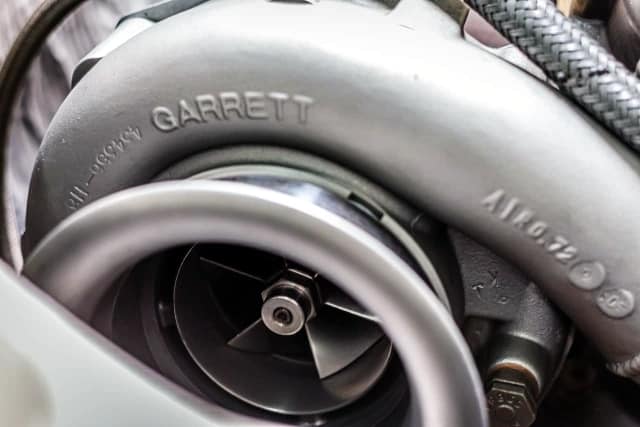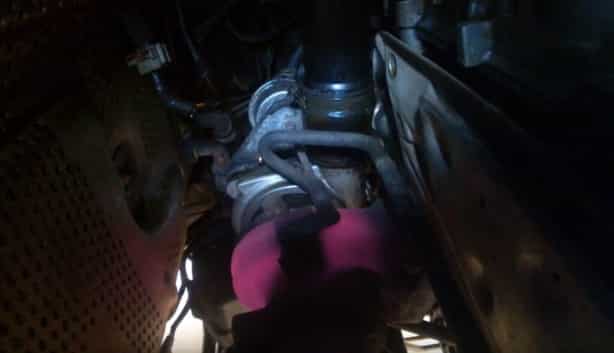I’ve yet to meet a single guy who doesn’t love hearing the turbo on his 6.7 Powerstroke whistle while pulling a heavy trailer up a hill. That whistling, whooshing noise is the sound of pure concentrated turbo-diesel power, and the looks that you get when you pass people and make them wonder “What the Hell is THAT Thing?” are very entertaining.
However, there are times when the turbo on your 6.7 Powerstroke might start making TOO MUCH noise, to the point where you get concerned about your turbocharger going bad or blowing up completely.
In that unfortunate case, there are a few signs that will help you figure out if the turbocharger on your 6.7 Powerstroke is at the end of its legs.
Why Turbochargers Fail on 6.7 Powerstrokes
Before we go any further, you might be interested in knowing the most common reasons for turbo failure in these engines.
While turbochargers are most often engineered to last the whole life of the vehicle, occasional factory defects, poor design choices, and poor maintenance lead to premature failure of the part. Unfortunately, earlier 6.7 Powerstrokes were known to blow turbos at an unusual rate.
Turbocharger failure is most common in 2011-2014 6.7 Powerstroke engines. The Garrett GT32 SST turbochargers on those earlier engines were adequate for the time but had a big weakness – ceramic ball-bearings. While ceramic ball-bearings sound good on paper, they were known to come apart under heavy load – especially in tuned trucks.
Ford fixed the issue in 2014 models by revising the turbo. After then, turbocharger failures became pretty rare.
Three Most Common Signs of a Bad Turbo on 6.7 Powerstrokes
With that out of the way, here are the three most common signs of a bad turbo on 6.7 Powerstroke engines:
1. Whining Engine
This one is a classic and almost a tell-tale sign that your turbo is on its way out. When the turbo goes bad on 6.7 Powerstroke engines, they develop a loud whining noise that is very distinct and similar to the sound of a supercharger. If the issue is ignored, the whining noise gets so loud and nasty that it makes the 6.7 Powerstroke sound like a jet engine. Here’s a great example:
Yikes. Once your engine is making a similar noise, you can almost be sure that you’re looking at a new turbo.
2. Blue/Gray Exhaust Smoke
Another great way to tell if your turbo is going bad. Blue/gray smoke means that your 6.7 Powerstroke is burning oil.

If blue/gray smoke is only visible on cold startups, then your turbo is not the culprit – a leaking valve seal is most likely. A leaking valve seal is pretty annoying, mostly harmless, and luckily not as devastating for your wallet as a failing turbo.
However, if your truck is constantly producing blue/gray smoke, especially when accelerating hard, then it’s a very big sign that your turbo is leaking oil and needs to be rebuilt or replaced.
3. Loss of Power/Boost
This one is not as reliable as the other two, but it goes hand-in-hand with a failing turbo. Failing turbo = less boost = less power.
Try to keep an eye on your boost gauge. If the turbocharger is producing noticeably less pressure than before, it might mean that it’s going bad and cannot spin as fast as it’s supposed to.
Though, I wouldn’t rely on it exclusively to justify all the effort and money required to check the turbocharger, as there are a bunch of other components that are much more likely to fail and cause a loss of power.
How To Quickly Diagnose a Bad Turbo
Now that you’re familiar with the signs of a bad/failing turbo on a 6.7 Powerstroke, you might be pleased to know that you can rather easily inspect the turbocharger yourself. You’ll have to pull off your lower intake, which does require some work. But once you’ve done that, you’ll have access to the intake (cold) side of the turbo.
As mentioned earlier, one of the most common causes of turbo failure on the 6.7 Powerstroke are bad shaft bearings. Keep in mind that the turbo spins at speeds in excess of 150,000 rpm, and if there is even a tiny bit of excessive play in the shaft bearing, the whole shaft will wobble and the blades will scrape against their housing.

Now, to inspect the turbocharger, remove the lower intake to get access to the cold side of the turbo. Reach in and grab the shaft. Try spinning it first. A healthy turbocharger should spin easily and freely, with absolutely no binding.
Next, try to move the shaft up and down. A tiny bit of play is completely fine here, as long as the blades don’t touch the housing. You’ll easily notice if there’s a lot of play, but to be completely sure, try to look for any scuffing marks on the housing from the blades. There’s not a lot of space, therefore you can try to reach in and take a picture with your phone.
Make sure that there are no scuffing marks and that the blades are completely intact, as even the slightest crack, nick, or chip could throw off the delicately balanced assembly, and prevent it from reaching maximum rpm.
Lastly, try to move the shaft inwards and outwards. There should be almost no play here. Barely noticeable if at all.
Below is a video which shows how much up and down play a brand new 6.7 Powerstroke turbocharger has. Use it as a baseline when comparing your own turbocharger.
How to Prevent Turbocharger Failure on 6.7 Powerstrokes
If you’re one of the unlucky 20112-2014 6.7 Powerstroke owners that still run the Garrett GT32 SST turbochargers with ceramic ball bearings, then your best bet is to upgrade to the Garrett GT37. It’s a bit larger and a more powerful unit, but most importantly – it’s MUCH more reliable. There are retrofit kits available, that make the whole process very simple.
Now, if you’ve got the more recent 2015-2020 6.7 Powerstroke with the more reliable revised turbo, then you’re in luck. The absolute best way to maintain your turbo and prevent it from blowing up is by using high-quality full-synthetic engine oil and by changing the engine oil frequently.
Turbochargers spin extremely fast and get REALLY hot, reaching temperatures of 1000 °F. Because of that, your engine needs proper engine oil that is capable enough to take the heat. Conventional (mineral) engine oil contains unstable and light molecules that vaporize in extreme heat, leaving hard deposits. These deposits restrict oil flow and starve the turbocharger of oil.

On the other hand, full-synthetic engine oil was shown to perform almost 50% better than conventional oils on various tests. It contains significantly fewer impurities than conventional and has a much better extreme temperature oxidation resistance. Basically, it’s better than conventional oil in almost every single way.
Conclusion
Turbos are awesome. Without them, diesel engines would never have gotten as far as they did. With that said, turbochargers can be quite a pain in the buttock region once they start going bad.
Luckily, you can catch a failing turbo before it goes boom by looking out for an increased engine whine, blue smoke coming from the exhaust, and loss of power. But if your turbocharger does go bad, I highly advise you from diving your truck until you get it fixed. Bad turbos will leak oil, which can find its way into the combustion chamber and keep the engine running on pure oil. That unfortunate scenario is called “Runaway Diesel” and it’s as bad as it sounds – your truck’s engine will continue running and increasing rpms until it locks up completely.

Eddie is the co-founder of CarCareCamp.com, and the site’s primary contributor.
Under his belt, Eddie has a bachelor’s degree in Automotive Electronics Engineering and almost a decade of experience working as a semi-truck technician (specializing in electrics).
